Q
What is a 2019 CR-V worth?
In Malaysia's used car market, the 2019 Honda CR-V typically ranges from around RM100,000 to RM140,000. The exact price hinges on factors like the vehicle's condition, mileage, trim level, and whether it's still under the original factory warranty. Higher-spec variants like the 1.5T C-P or 1.5T C-Premium usually command a premium of RM20,000 to RM30,000 over the base models.
As a popular SUV, the CR-V has a strong presence in Malaysia, and its resale value holds up pretty well. That's thanks to Honda's reputation for reliability, the CR-V's practical interior space, and relatively affordable maintenance costs. When shopping for a used one, it's smart to check for a complete service history. Pay extra attention to the 1.5-liter turbo engine and the oil dilution issue – Honda did address this with a software update, but it's still worth verifying carefully.
Also, the 2019 CR-V comes with Honda Sensing, which includes adaptive cruise control and lane-keeping assist – these features can affect the used car price too. If you're considering a used CR-V, I'd recommend going through reputable dealers or certified pre-owned channels to ensure vehicle quality and after-sales support.
Special Disclaimer: This content is published by users and does not represent the views or position of PCauto.
Related Q&A
Q
How often should I oil change my Honda CR-V?
According to Honda Malaysia's official recommendations, the oil change interval for the Honda CR-V is typically every 6 months or 10,000 kilometers, whichever comes first. This standard applies when using the factory-recommended fully synthetic engine oil. If mineral oil or semi-synthetic oil is used, the interval may need to be shortened to every 5,000 kilometers or 6 months – always best to check your vehicle's owner's manual or consult your local Honda dealership for specifics.
Malaysia's hot and humid climate, combined with frequent short trips or prolonged idling (think city traffic jams), can cause oil to degrade faster. So, it's a good idea for owners to regularly check both the color and level of their engine oil. If you notice the oil has turned black or its viscosity has dropped significantly, don't wait for the recommended mileage – go ahead and get it changed early.
What's more, if you regularly drive under high loads or tough conditions – like mountain roads or gravel tracks – you might want to consider shortening those service intervals a bit. Using high-quality oil and genuine Honda filters can also do wonders for extending your engine's lifespan.
Remember, sticking to regular oil changes isn't just about keeping your engine performing at its best. It also helps improve fuel efficiency and reduce emissions, which aligns with Malaysia's environmental regulations. Skimping on maintenance could lead to increased carbon buildup or even void your warranty – definitely not worth the risk.
And a special note for turbocharged CR-V owners (like the 1.5L VTEC Turbo): those engines run hotter, so it's even more crucial to stick strictly to the recommended service schedule to ensure proper lubrication of the turbocharging system.
Q
How does the 2019 CR-V handle in snow?
How the 2019 Honda CR-V handles in the snow really comes down to its drivetrain setup and the tires you’re rolling on. This SUV comes in both front-wheel drive and all-wheel drive variants. The Real Time AWD system does a solid job of automatically shifting torque to the rear wheels when needed, which definitely helps with traction on snowy surfaces. But let’s be clear – this isn’t a hardcore off-roader. It’s much more at home tackling light snow cover or slick roads rather than deep powder.
If you’re planning on driving in the snow regularly, swapping out for winter tires is a smart move. The stock all-season tires tend to harden up in cold temperatures, and that can definitely take a toll on braking performance and overall handling.
For our readers in Malaysia, sure, snow driving might not be part of your daily routine, but getting the lowdown on these features still comes in handy. Whether you’re renting a car abroad or using a CR-V in a colder climate, this info helps you prep properly. Plus, tech like the Vehicle Stability Assist (VSA) and Hill Start Assist isn’t just for snow – they’re super useful for boosting safety on slippery roads during Malaysia’s rainy season too.
And hey, no matter how fancy the tech is, if you hit extreme weather, slowing down and avoiding sudden braking or sharp turns are still the golden rules for staying safe out there.
Q
What is the fuel pump problem on a 2019 Honda CR-V?
The 2019 Honda CR-V fuel pump issue primarily affects certain vehicles where a manufacturing defect in internal fuel pump components could lead to sudden engine stalling while driving or failure to start. Honda did issue a recall notice for this problem. Malaysian owners experiencing symptoms like reduced acceleration power, rough idling, or an illuminated check engine light should contact an authorized service center promptly for inspection. If necessary, replacing the fuel pump with the updated component is recommended to eliminate the potential hazard.
As a critical component that delivers gasoline from the tank to the engine, the fuel pump's reliability directly impacts driving safety. During regular maintenance, a basic assessment can be done by checking fuel pressure and listening for any unusual noises from the pump. Additionally, Malaysia's hot and humid climate can accelerate the aging of rubber seals. Owners are advised to adhere to the official maintenance schedule and use high-quality fuel to minimize the risk of fuel system failures.
If your vehicle is part of the recall, Honda Malaysia will provide free repair services. Owners can also check their vehicle's recall status by entering the VIN on the official website.
Q
How many miles will a 2019 Honda CR-V last?
Under normal maintenance and usage conditions, a 2019 Honda CR-V can typically clock in 200,000 to 300,000 kilometers or even more. Its actual lifespan hinges on the owner's driving habits, how regularly it's serviced, and let's not forget Malaysia's unique road conditions and climate. The CR-V has always been lauded for its reliable engines and overall durability, with the 1.5-liter turbocharged powerplant and the hybrid variant standing out for their fuel efficiency and long-term dependability.
To keep your CR-V going strong for the long haul, sticking to regular oil changes, transmission fluid services, and brake fluid replacements is a must. Don't skimp on checking tires, the brake system, and suspension components either—those are crucial. Malaysia's hot weather and frequent downpours can be tough on batteries and rubber parts, so paying extra attention to those maintenance details really pays off.
Also, using genuine or certified parts and avoiding overly aggressive driving will definitely help boost the vehicle's longevity. When properly cared for, the CR-V doesn't just hold onto its performance; it also retains good resale value in the used car market. All in all, it's a solid SUV choice for Malaysian families looking for something that can go the distance.
Q
Are Honda CRVs good in snow?
The Honda CR-V holds its own pretty well when the snow starts falling, especially if you opt for the Real Time AWD model. That system smartly shifts torque between the front and rear wheels based on what the road's doing, which really helps with grip on slippery or snow-covered surfaces. It's got a decent ride height too, around 198mm, which is better than a lot of other crossovers out there, making it solid for light snow conditions. But if you're staring down a full-on winter blizzard or deep drifts, swapping in winter tires and even throwing on chains is the way to go for maximum safety.
Now, for our readers in Malaysia, snow driving obviously isn't on the daily agenda, but that CR-V AWD still comes in handy. It adds a nice layer of stability on those rainy-season wet roads or when you're tackling some light off-road trails. And if you're planning a road trip to a colder climate? Keep in mind the cold can affect your battery performance and engine oil viscosity. It's a good idea to get a winter-specific check-up before you go, and definitely look into whether the area you're visiting legally requires winter tires.
Of course, the CR-V isn't the only player in town. Rivals like the Toyota RAV4 or Subaru Forester each bring their own snow-specific tech to the table. So, when you're shopping around, it pays to compare based on what your actual needs are.
Q
Is the Honda CR-V high maintenance?
The Honda CR-V's maintenance costs in Malaysia sit right in the middle of the pack. Exactly how much you'll shell out depends on things like the model year, engine type, and how you drive. Generally speaking, routine services like oil changes and filter replacements at authorized service centers are pretty reasonably priced. But if you need parts replaced—think brake pads or a battery, for example—the costs will climb a bit. My advice? Stick to the maintenance schedule in the owner's manual. It's the best way to keep your CR-V running strong for longer and avoid those nasty surprise repair bills down the line.
Another plus for CR-V owners here is the SUV's reputation for reliability and durability. It's a popular choice in Malaysia, so there's a good supply of non-genuine parts and third-party repair shops. That competition can definitely help keep your maintenance costs in check if you're open to those options.
Malaysian buyers should also factor in fuel economy when considering a CR-V. The hybrid variant, in particular, can save you a bundle on fuel costs over the long haul, which helps offset the overall cost of ownership.
All in all, as long as you keep up with regular maintenance and choose the right repair options for your needs, the CR-V's running costs are totally manageable—no need to worry about them breaking the bank.
Q
What is the fuel consumption of Honda CRV 2019?
The 2019 Honda CR-V's fuel economy in the Malaysian market varies depending on the powertrain. The 1.5-liter turbocharged variant (CR-V TC-P) averages around 8.5-9.2 liters per 100km in city driving. Hit the highway, and that drops to a more efficient 6.3-7.1 liters per 100km, with a combined figure sitting at approximately 7.5 liters per 100km. Of course, these numbers can fluctuate based on your driving style, road conditions, and how well you maintain the vehicle.
It's worth noting that as a mid-size SUV, the CR-V's fuel consumption is closely tied to its weight, aerodynamics, and Honda's Earth Dreams technology. This setup works its magic through direct injection and a CVT gearbox to keep those fuel bills in check. For Malaysian buyers, considering our local road realities – think plenty of stop-and-go city traffic – it's smart to pay extra attention to those low-speed fuel economy figures. And don't sleep on regular oil changes using the manufacturer-recommended viscosity, like 0W-20; that'll help keep the engine running at its most efficient.
In the competitive mid-size SUV segment, the CR-V's fuel economy is right in the mainstream mix. If stretching every liter is your top priority, the CR-V Hybrid is worth a look, but just remember to weigh that higher initial purchase price against the long-term savings at the pump.
Q
Is there a recall on the 2019 Honda CR-V?
As of now, there's no official record of a widespread recall for the 2019 Honda CR-V in Malaysia. However, it's a good idea for owners to regularly check their vehicle's status through Honda Malaysia's official recall page on their website or by visiting an authorized service center. This is because in some regions, recalls have been issued for potential issues with components like fuel pumps or battery sensors. Malaysian CR-V owners can also call Honda Malaysia's customer service hotline at 1-800-88-2020 or use the MyHonda mobile app to check their VIN and confirm the status of their specific vehicle.
It's worth emphasizing that regardless of any recall activity, regular maintenance is especially crucial for SUVs like the CR-V. Pay close attention to checking the oil level in the 1.5L turbocharged engine and the condition of the CVT transmission fluid—keeping these key components in good shape will significantly extend your vehicle's lifespan. If you receive a text message or email notification from Honda Malaysia recently, make sure to address it promptly. Malaysia's hot and humid climate can cause electronic components and rubber parts to age more quickly, so staying proactive with inspections can help prevent potential problems down the line.
Q
How long will a 2019 CRV last?
The lifespan of a 2019 Honda CR-V in Malaysia really comes down to how well you take care of it, how you drive, and the roads you tackle. If you stick to the manufacturer's recommended maintenance schedule—like changing the oil every 5,000 to 10,000 km and keeping an eye on critical components—and avoid aggressive driving, these things can easily clock over 200,000 km or last more than 10 years.
The 1.5T turbo engine and CVT transmission in the CR-V are pretty tried-and-tested tech. Just make sure you stay on top of transmission fluid and coolant changes, and that powertrain should hold up nicely for the long haul. Malaysia's tropical heat can be rough on rubber parts and electronics, though. I'd recommend checking suspension bushings, weatherstripping, and other parts prone to aging every couple of years. For long-term ownership, keeping an eye on rust protection is smart too, especially if you're in a coastal area.
Japanese SUVs in this class are generally known for durability, but the real difference in how a car holds up boils down to whether the owner stays consistent with preventive maintenance. If you're planning to keep it for a while, hang onto those complete service records. They'll not only help keep the CR-V running strong but also maintain better resale value when the time comes to sell.
Q
What is the most common problem for the Honda CR-V?
The most common issues with the Honda CR-V in Malaysia commonly occur in its electronics and transmission. Some owners report occasional lag or blackouts on the multimedia touchscreen, which is usually fixed with a software update or screen module replacement. Additionally, early models equipped with the CVT transmission might experience a noticeable jerk during gear shifts after prolonged use, which is mainly related to transmission fluid change intervals. It’s advisable to stick to the 40,000 km replacement schedule using the manufacturer-specified fluid to maintain smooth operation. Notably, the CR-V’s 1.5T turbo engine requires extra attention to cooling system maintenance in Malaysia’s tropical climate. Regularly cleaning dust and bug debris from the radiator fins effectively helps prevent overheating. Given the country’s rainy and humid conditions, owners should also check the sunroof drain tubes annually to ensure they’re unclogged and avoid water seeping into the cabin. With its high local popularity, the SUV benefits from readily available genuine parts and mature repair expertise. As long as you follow the maintenance manual for regular servicing, the CR-V remains a reliable choice overall.
Latest Q&A
Q
Is there a recall on 2019 Kia Optima engines?
Regarding the engine recall issue for the 2019 Kia Optima, there's currently no official recall announcement specifically targeting the Malaysian market. However, looking at international records, certain overseas markets did see recalls for the 2019 Optima due to potential engine faults – think issues like bearing wear in Theta II GDI engines, which could potentially lead to stalling or even fire risks. If you're a Malaysian Optima owner, I’d strongly suggest heading to Kia Malaysia’s official website, finding their recall check page, and plugging in your Vehicle Identification Number (VIN) to see if your ride is affected. Or, just swing by your nearest authorized service center for a free inspection – better safe than sorry.
It’s worth noting that Hyundai Motor Group implemented an extended warranty policy worldwide for Theta II engine concerns. For some models, the warranty coverage for engine-related components can be extended up to 15 years or 200,000 kilometers, whichever comes first. That’s a solid demonstration of the brand taking responsibility for its customers.
For Malaysian owners, a proactive step during regular maintenance is to specifically request a check on the engine's condition – keeping an eye on oil loss and any unusual noises is key for preventing potential problems. Also, it’s a good idea to stay updated on any service campaigns announced by local Kia dealers. Sometimes, these campaigns might offer free inspections or repairs for issues that aren’t officially classified as recalls but are still worth addressing.
If your vehicle starts showing symptoms like warning lights flashing, a noticeable drop in power, or excessive oil consumption, don’t delay – contact after-sales service immediately. Catching and addressing issues early can significantly reduce the cost of repairs down the line.
Q
How long will a 2019 Kia last?
The lifespan of a 2019 Kia largely depends on how well you maintain it, your driving habits, and Malaysia's road conditions. If you stick to the manufacturer's recommended maintenance schedule—like changing the oil every 6 months or 10,000 km and checking key components—drive sensibly, and avoid prolonged rough roads, these models typically clock 200,000 to 300,000 km or last over 10 years. Malaysia's hot and humid climate takes a toll on rubber parts (belts, bushings) and batteries, so it's smart to shorten inspection intervals for these and regularly clean the AC system to prevent mold growth. Hyundai-Kia's Theta II and Nu engines are pretty solid tech-wise, and paired with the 6AT transmission, the powertrain reliability holds up well against competitors—just don't skip that transmission fluid change.
Notably, Malaysia's COE system pushes some owners to prioritize long-term care, so I'd recommend using SP/GF-6A spec oil at authorized dealers or certified workshops. On the used market, 2019 Kias with full service records still hold decent resale value. If you're planning to keep it for the long haul, extended warranty might be worth considering. Durability varies a bit between models like the Cerato and Sportage due to their different purposes—SUVs like the Sportage might need more frequent suspension checks.
Q
Are Kia Optimas cheap to fix?
When it comes to the maintenance costs of the Kia Optima in Malaysia, this sedan falls right in the middle of the pack for midsize cars. Parts and labor are definitely easier on the wallet compared to luxury brands, though you might pay a bit more than some heavily localized Japanese models. The Optima's 2.0L and 2.4L naturally aspirated engines are pretty tried-and-true tech – basic services like an oil change with filters will set you back around RM300 to RM500, which lines up with what you'd pay for other cars in its class. Just a heads-up though: if you're looking at the 1.6T turbocharged version, expect those service bills to creep up a notch.
Kia's authorized service center network covers most major cities in Malaysia, so getting your hands on genuine parts is usually straightforward. That said, some non-critical components might need to be ordered in, so it's smart to stick to regular maintenance schedules to avoid bigger repair headaches down the line. If you're in the market for a used Optima, prioritize ones with a complete service history – and maybe look into third-party warranty plans to help cover any unexpected major repairs. All in all, the Optima is more budget-friendly to maintain than its European rivals, but you'll still need to set aside more than you would for a basic econobox. Choosing official or certified repair channels can really help keep those costs in check.
Q
What kind of engine is in the 2019 Kia Optima?
The 2019 Kia Optima hits Malaysian roads with two petrol engine choices: a 2.0-litre naturally aspirated Theta II MPI and a 1.6-litre turbocharged Gamma T-GDI. The 2.0L puts out 152 hp and 192 Nm of torque, perfect for folks who prioritize a smooth, laid-back drive. On the flip side, the 1.6T cranks things up with a meatier 180 hp and 265 Nm, catering to drivers who crave that extra zip when they hit the throttle. Both engines are mated to a 6-speed automatic gearbox, striking a decent balance between fuel efficiency and everyday comfort.
What’s neat about the Optima’s engines is the tech packed in—think direct injection and turbocharging (for the 1.6). These aren’t just buzzwords; they actually help boost power while keeping fuel consumption in check. For Malaysian drivers, both engines should handle our local climate and road conditions like a champ. Kia’s engines have also proven their durability over time, and maintenance costs won’t break the bank. If you’re really hungry for more power, there’s the Optima GT with a 2.0-litre turbo, but keep in mind that trim’s a bit of a rare find in Malaysia.
Q
What is a good year for Kia Optima?
If you're in the Malaysian market for a Kia Optima, the 2016 to 2018 model years come highly recommended. These iterations strike a solid balance between reliability, features, and driving dynamics. The 2016 facelift, in particular, brought a more stylish exterior, a nicer interior feel, and stepped-up safety kit like blind-spot detection and lane-keeping assist. Then, the 2017 and 2018 models refined the powertrain further, delivering an even smoother ride.
On top of that, used Optimas in Malaysia are pretty reasonably priced, and maintenance costs won't break the bank either. They're a solid pick if you're on a budget but still want the comfort of a midsize sedan. A quick heads-up though: when shopping used, always prioritize ones with complete service records. It's also smart to get a proper inspection through official channels to make sure the car's in good shape. Malaysia's hot and humid weather can be tough on a car's electronics and rubber parts, so keeping an eye on the cooling system and seals will definitely help keep it running longer.
View MoreRelated News
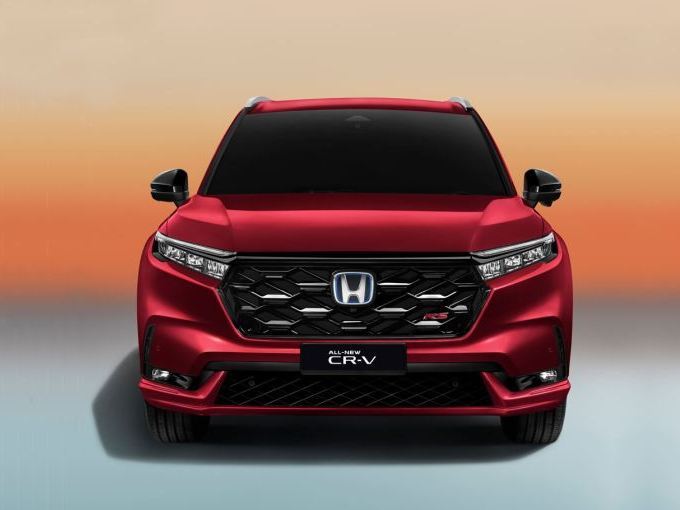
Honda CR-V: 1.5L Turbo or 2.0L Hybrid - Which One Is Right for You?
JamesJun 18, 2025
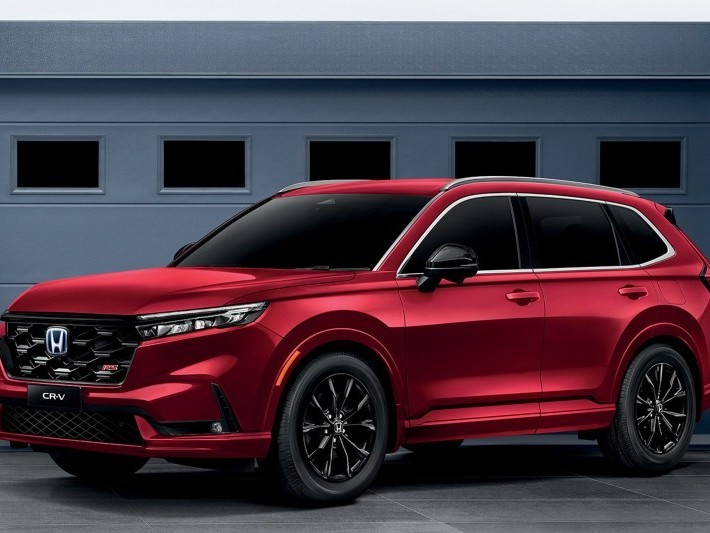
Smart Choice: Honda CR-V - Unbeatable Value, Worry-Free Driving
MichaelApr 11, 2025
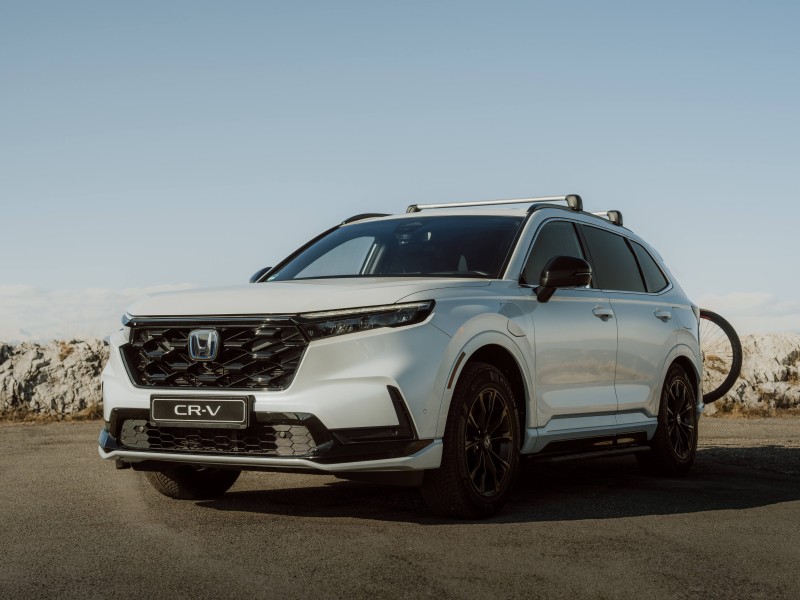
CR-V 30th Anniversary Edition Debuts in Europe: Camp-Ready Interior Takes Center Stage!
JamesApr 9, 2025
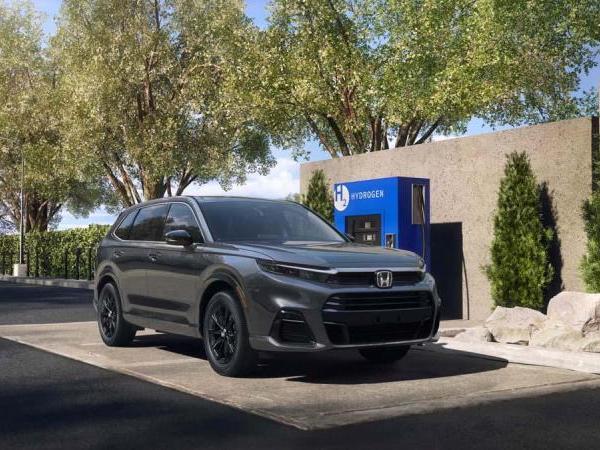
Honda CR-V e: FCEV Makes its Debut, Capable of Utilizing Hydrogen for Charging
Kevin WongMar 11, 2024

Honda N-ONE e: Officially launched in the Japanese market, with a range of 295 kilometers
AshleySep 12, 2025
View More












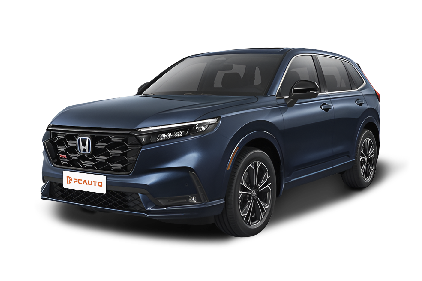
 Cars
Cars
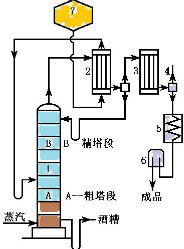



Pros
Cons